Zachary Pardos
Skill-based Explanations for Serendipitous Course Recommendation
Aug 27, 2025Abstract:Academic choice is crucial in U.S. undergraduate education, allowing students significant freedom in course selection. However, navigating the complex academic environment is challenging due to limited information, guidance, and an overwhelming number of choices, compounded by time restrictions and the high demand for popular courses. Although career counselors exist, their numbers are insufficient, and course recommendation systems, though personalized, often lack insight into student perceptions and explanations to assess course relevance. In this paper, a deep learning-based concept extraction model is developed to efficiently extract relevant concepts from course descriptions to improve the recommendation process. Using this model, the study examines the effects of skill-based explanations within a serendipitous recommendation framework, tested through the AskOski system at the University of California, Berkeley. The findings indicate that these explanations not only increase user interest, particularly in courses with high unexpectedness, but also bolster decision-making confidence. This underscores the importance of integrating skill-related data and explanations into educational recommendation systems.
Auditing an Automatic Grading Model with deep Reinforcement Learning
May 11, 2024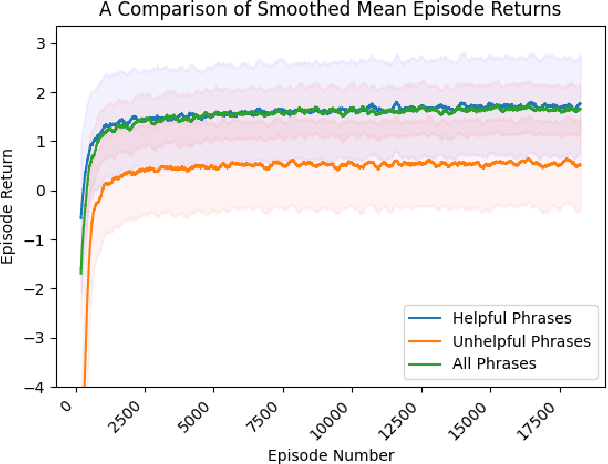
Abstract:We explore the use of deep reinforcement learning to audit an automatic short answer grading (ASAG) model. Automatic grading may decrease the time burden of rating open-ended items for educators, but a lack of robust evaluation methods for these models can result in uncertainty of their quality. Current state-of-the-art ASAG models are configured to match human ratings from a training set, and researchers typically assess their quality with accuracy metrics that signify agreement between model and human scores. In this paper, we show that a high level of agreement to human ratings does not give sufficient evidence that an ASAG model is infallible. We train a reinforcement learning agent to revise student responses with the objective of achieving a high rating from an automatic grading model in the least number of revisions. By analyzing the agent's revised responses that achieve a high grade from the ASAG model but would not be considered a high scoring responses according to a scoring rubric, we discover ways in which the automated grader can be exploited, exposing shortcomings in the grading model.
Explainable Automatic Grading with Neural Additive Models
May 01, 2024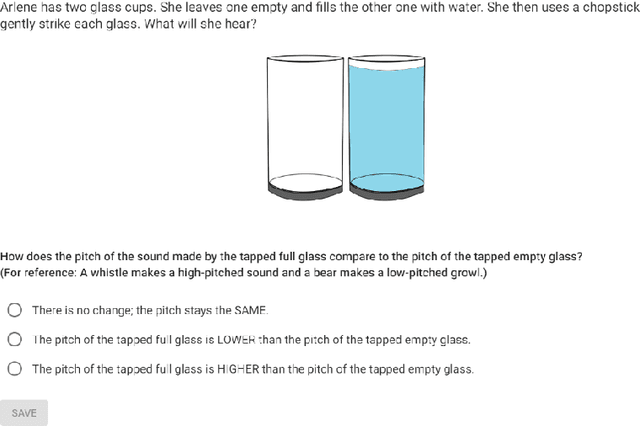
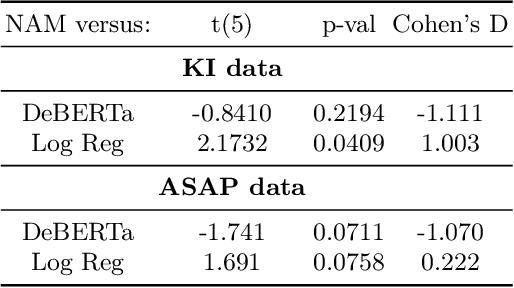
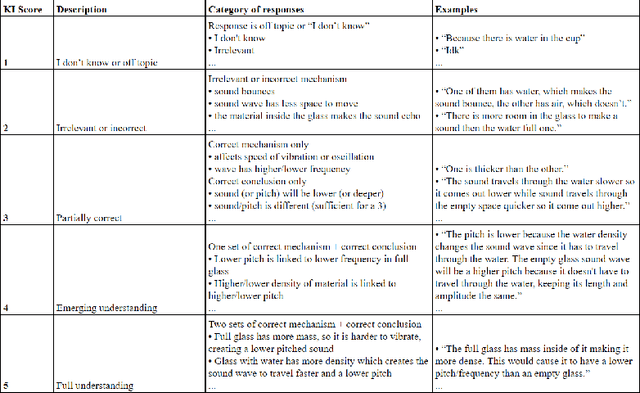
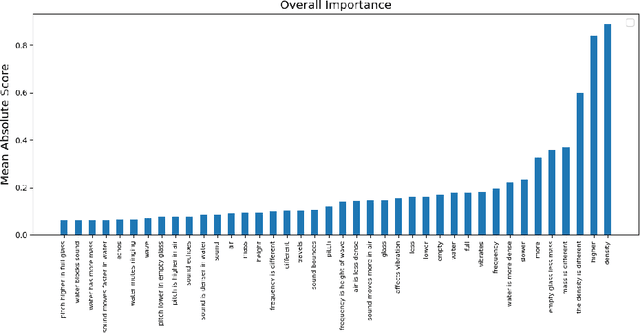
Abstract:The use of automatic short answer grading (ASAG) models may help alleviate the time burden of grading while encouraging educators to frequently incorporate open-ended items in their curriculum. However, current state-of-the-art ASAG models are large neural networks (NN) often described as "black box", providing no explanation for which characteristics of an input are important for the produced output. This inexplicable nature can be frustrating to teachers and students when trying to interpret, or learn from an automatically-generated grade. To create a powerful yet intelligible ASAG model, we experiment with a type of model called a Neural Additive Model that combines the performance of a NN with the explainability of an additive model. We use a Knowledge Integration (KI) framework from the learning sciences to guide feature engineering to create inputs that reflect whether a student includes certain ideas in their response. We hypothesize that indicating the inclusion (or exclusion) of predefined ideas as features will be sufficient for the NAM to have good predictive power and interpretability, as this may guide a human scorer using a KI rubric. We compare the performance of the NAM with another explainable model, logistic regression, using the same features, and to a non-explainable neural model, DeBERTa, that does not require feature engineering.
pyBKT: An Accessible Python Library of Bayesian Knowledge Tracing Models
May 29, 2021

Abstract:Bayesian Knowledge Tracing, a model used for cognitive mastery estimation, has been a hallmark of adaptive learning research and an integral component of deployed intelligent tutoring systems (ITS). In this paper, we provide a brief history of knowledge tracing model research and introduce pyBKT, an accessible and computationally efficient library of model extensions from the literature. The library provides data generation, fitting, prediction, and cross-validation routines, as well as a simple to use data helper interface to ingest typical tutor log dataset formats. We evaluate the runtime with various dataset sizes and compare to past implementations. Additionally, we conduct sanity checks of the model using experiments with simulated data to evaluate the accuracy of its EM parameter learning and use real-world data to validate its predictions, comparing pyBKT's supported model variants with results from the papers in which they were originally introduced. The library is open source and open license for the purpose of making knowledge tracing more accessible to communities of research and practice and to facilitate progress in the field through easier replication of past approaches.
Applying Recent Innovations from NLP to MOOC Student Course Trajectory Modeling
Jan 23, 2020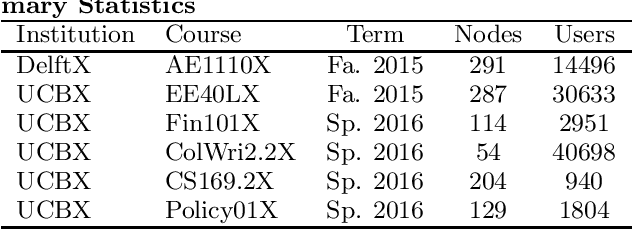
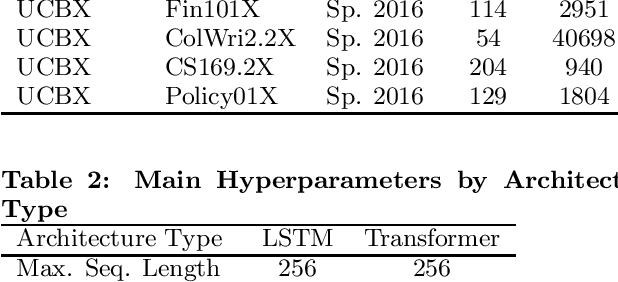


Abstract:This paper presents several strategies that can improve neural network-based predictive methods for MOOC student course trajectory modeling, applying multiple ideas previously applied to tackle NLP (Natural Language Processing) tasks. In particular, this paper investigates LSTM networks enhanced with two forms of regularization, along with the more recently introduced Transformer architecture.
 Add to Chrome
Add to Chrome Add to Firefox
Add to Firefox Add to Edge
Add to Edge